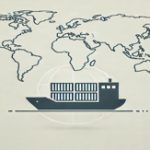The COVID-19 pandemic reshaped the global trade landscape, prompting significant disruptions in supply chains and the implementation of strict health and safety protocols. As countries grappled with the pandemic’s impact, many revised their export regulations to adapt to new challenges. These changes affected not just the movement of goods across borders but also the processes and documentation required for export. Now, in the post-COVID era, exporters must adapt to evolving regulations to remain competitive. Understanding these changes is crucial for businesses to successfully navigate the global market, maintain compliance, and seize new opportunities.
What Exactly Happened During COVID-19?
The COVID-19 pandemic brought about unprecedented challenges to global trade. At the height of the pandemic, numerous countries implemented stringent measures such as border closures, export bans, and new safety protocols to curb the virus’s spread. These changes led to delays in the movement of goods, increased shipping costs, and disruptions in global supply chains. For instance, exports of medical supplies, including masks and ventilators, faced bans or restrictions as countries prioritized domestic needs. Even non-medical goods faced delays as ports operated with reduced capacity, and transportation systems were disrupted. Consequently, exporters encountered significant challenges in meeting demand and fulfilling contractual obligations.
Effects on Existing Export Regulations
The onset of the pandemic forced governments worldwide to re-evaluate existing export regulations. Many pre-COVID trade agreements and export licenses were temporarily suspended or altered to prioritize essential goods. Countries like India and the United States imposed restrictions on critical items such as pharmaceuticals and medical equipment. Additionally, new health and safety regulations required exporters to ensure their products met specific sanitation standards. These changes disrupted long-established trade routes and created a more complex regulatory environment for exporters. The pandemic highlighted vulnerabilities in global trade systems, emphasizing the need for more flexible and resilient trade policies.
Why the Need for Regulatory Changes Post-COVID?
As the world recovers from the pandemic, governments and trade organizations have recognized the need to modernize and adjust their export regulations. The focus has shifted from merely managing the crisis to ensuring sustainable trade practices in a post-pandemic world. This adjustment is necessary for several reasons:
- Supply Chain Resilience: The pandemic exposed weaknesses in global supply chains, leading many countries to adjust export policies to promote supply chain resilience. Regulations now emphasize building redundancy and diversifying trade partners to avoid over-reliance on a few markets.
- Health and Safety Protocols: Post-COVID regulations have integrated stricter health and safety requirements to minimize the risk of future outbreaks. These include guidelines for sanitizing goods, ensuring safe packaging, and maintaining social distancing during inspections and cargo handling.
- Digitalization of Trade Processes: The shift to remote work and reduced physical contact has accelerated the adoption of digital tools in export documentation and customs procedures. Many countries now require electronic submission of documents to reduce delays and improve transparency in trade processes.
- Environmental Considerations: There is also a growing emphasis on sustainability in post-COVID trade policies. Countries are prioritizing eco-friendly practices, which include green logistics and sustainable packaging requirements. Exporters need to adapt to these changes to access markets that value environmental responsibility.
The Anticipated Effects of Post-COVID Regulatory Changes
The changes in export regulations post-COVID are expected to have far-reaching implications for global trade. Here are some of the anticipated effects:
- Increased Costs and Compliance Burdens: With stricter regulations come additional compliance requirements, which can increase operational costs for exporters. Businesses will need to invest in training, technology, and new processes to meet these standards.
- Faster and More Efficient Trade Processes: Digitalization and automation of trade processes are likely to lead to faster customs clearance and more efficient trade transactions. This can help reduce shipping delays and improve the speed at which goods reach their destinations.
- Market Diversification: As countries seek to reduce dependence on a limited number of trade partners, businesses have opportunities to diversify into new markets. This shift can open up export opportunities in regions that were previously underexplored.
- Enhanced Focus on Traceability: Post-pandemic, there is a greater demand for transparency in the origin and handling of exported goods. This is particularly relevant for industries like food and pharmaceuticals, where consumers and regulators demand better tracking and traceability throughout the supply chain.
Recent Trends in Export Regulations
The changes brought about by the pandemic have led to several key trends in export regulations that exporters need to watch closely:
- Digital Trade Agreements: The rise of digital trade agreements between countries aims to facilitate electronic transactions and reduce trade barriers. These agreements often include provisions for secure digital signatures, electronic payment systems, and cross-border data flows.
- Regional Trade Alliances: In Africa, the African Continental Free Trade Area (AfCFTA) has gained momentum as a means to strengthen intra-African trade. This regional agreement aims to ease trade among African countries by harmonizing regulations, offering new opportunities for exporters on the continent.
- Shifts in Geopolitical Alliances: The pandemic has prompted shifts in geopolitical alliances, affecting trade policies. For instance, many countries are exploring trade partnerships that align with their pandemic recovery goals. Exporters need to stay informed about these shifts to leverage new market opportunities.
Private Sector and Government Interventions
Both the private sector and governments have been active in adapting to the new trade landscape:
- Government Initiatives: Governments have introduced support packages and incentives to help exporters adapt to new regulations. For example, Nigeria’s Export Expansion Facility Programme (EEFP) aims to support small and medium-sized enterprises in reaching new markets.
- Private Sector Adaptations: Exporters are investing in logistics infrastructure and digital solutions to streamline their operations. Many have shifted towards more resilient and sustainable practices to meet the evolving demands of international markets.
Where Are We, and What Does the Future Hold?
As we transition into a post-pandemic global trade environment, exporters must remain agile and proactive. The focus is on building resilient supply chains, leveraging digital technologies, and adapting to new health and safety standards. Exporters that can anticipate these changes and quickly adapt to new regulations will be better positioned for long-term success.
The future of export regulations is likely to be shaped by a combination of regional trade agreements, technological advancements, and an increasing emphasis on sustainability. The export landscape will continue to evolve, and those who stay ahead of these trends will thrive. Adapting to the new reality is not only a challenge but also an opportunity for businesses to reshape their strategies and capitalize on emerging markets.
Conclusion
Adapting to changing export regulations in the post-COVID era requires flexibility, strategic planning, and an understanding of global trade dynamics. While the pandemic has brought challenges, it has also created new avenues for growth through digital trade, regional alliances, and sustainable practices. By embracing these changes, exporters can navigate the complexities of the new trade environment and seize the opportunities that lie ahead.
References
- World Trade Organization (WTO). “Trade in Services in the Post-COVID World.” wto.org
- International Trade Centre (ITC). “Adapting to Post-COVID Trade Realities.” intracen.org
- African Continental Free Trade Area (AfCFTA). “Post-COVID Trade Integration in Africa.” afcfta.au.int
- United Nations Conference on Trade and Development (UNCTAD). “Digitalization in Post-COVID Trade.” unctad.org
- Nigerian Export Promotion Council (NEPC). “Export Expansion Facility Programme (EEFP).” nepc.gov.ng




